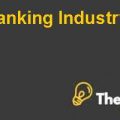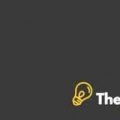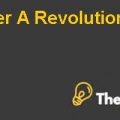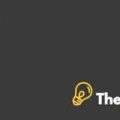
Business Valuation Case Solution
Financial Analysis
Profitability Ratios
Net Profit Margin
The net profit margin ratio defines the profitability of the company. It is of prime concern for the investors. As per the analysis, it can be seen that the ratio has a declining trend. At year 2011, the ratio was 3.2% while it decreased to 1.9% in the year 2015. The company’s profitability has been decreasing and it is a serious concern.
Gross Profit Margin
The profitability ratio tells the company’s ability to generate profits by selling its inventory. The ratio only considers the cost of goods sold of the company. It can be seen that the company’s gross profit ratio has been increasing. As compared to the net profit, this ratio has an increasing trend. This suggests that the company has issues at the operational level, which is causing a decline in its profits.
Operating Profit Margin
The ratio tells the percentage of the operating income from the overall revenues of the company. Here, the trend is similar to the net profit margin ratio. The trend is in declining state. This further polishes the concerns over the operating activities. The company has to look into its operating activities and should make changes to improve these activities.
Return on Assets
The ratio helps in identifying the company’s ability regarding how efficiently it is utilizing its total assets to generate profit. The company earned a ratio of 10% in the year 2011. Moreover, as the company is moving from 2011 to 2012, the ratio gets better but then it starts declining. In the year 2015, the ratio was 6.2%. This is because the assets have increased significantly. The company is not using the additional assets efficiently to generate the proportionate income by utilizing such assets.
Return on Equity
The ratio depicts the company’s ability to generate profit from the investment of the investors of the company. The return on equity is quite higher in the first two years, with 30.5% and 32% in 2011 and 2012 respectively. Then the equity started to decrease significantly and in the year 2015, it went down to 10.6%. It is conferred from the financial statements that the equity has been increased significantly, while it might be used to buy more assets.
| Ratio Analysis | 2011 | 2012 | 2013 | 2014 | 2015 |
| Profitability Ratios | |||||
| Gross Margin Ratio | 38.9% | 44.1% | 42.7% | 41.8% | 41.9% |
| Operating Profit Margin | 4.5% | 5.6% | 4.4% | 2.9% | 2.7% |
| Net Profit Margin | 3.2% | 3.9% | 3.1% | 2.0% | 1.9% |
| Return on Assets | 10.3% | 13.6% | 10.0% | 6.5% | 6.2% |
| Return on Equity | 30.5% | 32.0% | 15.6% | 12.1% | 10.6% |
Leverage Ratios
Debt Ratio
The debt ratio of the company shows the company’s ability to pay off its liabilities by the use of its assets. The Debt ratio shows that the financial health of the company is strong. The ratio in the year 2011 had been 66%, which represents that in every 1 rupee of assets, the company has 0.65 of liability obligation. Thus, the company’s liquidity performance is not that good. But the ratio decreased significantly to 41% in the year 2015. Excluding other information, this is a good indicator.
Cash Ratio
Here, the situation is extremely negative. The company has abundance of cash reserve to pay off its current liabilities. However, it can only pay 25.5% of the current liabilities by using its cash reserve. The situation was worse at the year 2011, but now it has enhanced significantly.
Cost of Borrowing
A company needs funds for every aspect of business and usually borrows funds when necessary. The cost of borrowing is the factor that affects the company’s ability to get funds. The company’s cost of borrowing was 7.5% in the year 2011 that went up to 12.8% in the year 2015. The cost of borrowing is high for the company....................
This is just a sample partial case solution. Please place the order on the website to order your own originally done case solution












